
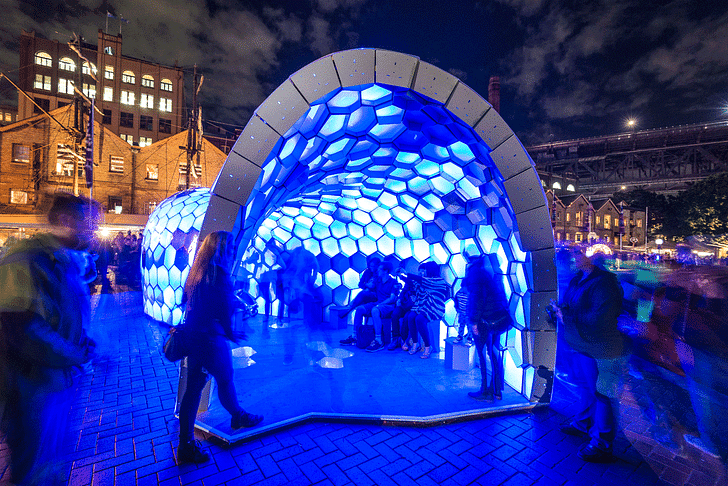
Part of an 18-day arts festival in Sydney, Australia, the Vivid Lights pavilion explores the pedestrian dynamic in touch and light. A collaborative research effort led by the Abedian School of Architecture at Bond University, the Vivid pavilion Student Works puts a human scaled experience in conversation with local architectural icons.
Positioned in coordination with Sydney Harbor Bridge and the Utzonís Sydney Opera House, the Cellular Tessellation pavilion emits a colored light to fall on visiting pedestrians, traveling through its tunnel and 200 meters of LED lights. The basic structure is formed with digitally-fabricated aluminum panels, folded and aggregated, created by a project algorithm that can work with nearly any surface. Coordinating with Abedian on the project were architecture student assistants from the University of Technology Sydney, University of South Wales, and University of Sydney.
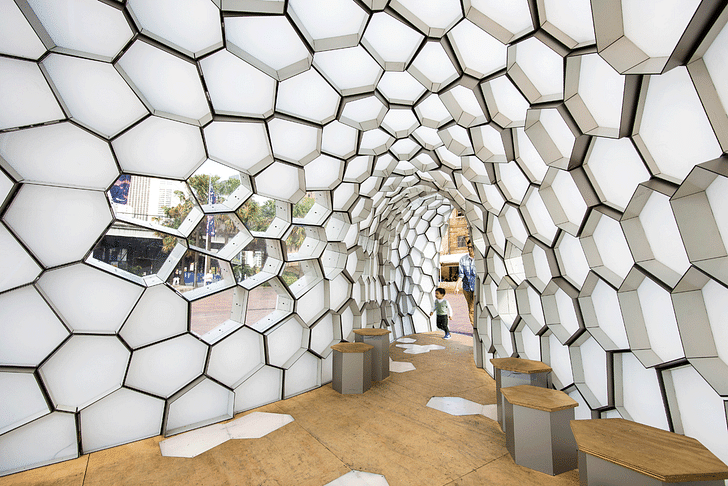

Chris Knapp (Discipline Leader of Abedian School of Architecture at Bond University, previously featured in our Deans List series), along with Abedian Architecture academic staff Jonathan Nelson and masters student Michael Parsons, led the design and fabrication team on Cellular Tessellation, in collaboration with structural engineer Phil Wallace (Consulting Engineers P/L), and Nathan Freeman (Abedian's Workshop Manager). The following project description comes courtesy of Knapp:
Cellular Tessellation is a small yet generous pavilion put on display as part of the Sydney Vivid Light festival in 2014. The project is both spatial and aesthetic, bringing the quality of architectural inhabitation and visceral experience to an urban festival which is typically limited to visual engagement.

The pavilion offers pedestrians an experience which is at once atmospheric and ephemeral - bathing occupants in the soft glow of concealed, Diaphanous light - whilst simultaneously precise and contextual - delineating a very clear relationship between the pavilion and the imminent landmarks of the Sydney Harbour Bridge and Utzonís Sydney Opera House which are framed by the overarching project geometry and a clear set of apertures, respectively.
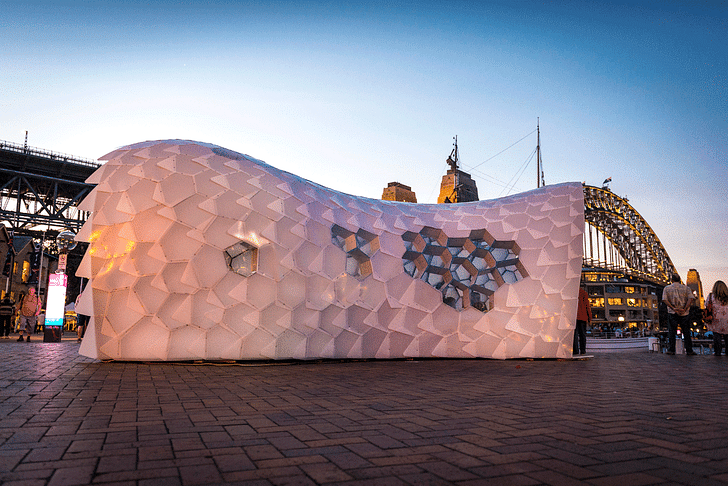

Cellular Tessellation uses innovative computational form generation techniques to create and resolve the geometry and componentry of the pavilion. The project is fully parametric and digitally fabricated from flat sheet materials which are folded and aggregated to create a shell comprised of 380 unique cells. Aluminium sandwich panels form the primary pavilion structure, which is akin to a rigid but non-heirarchical net of self-jigging elements. Each cell is infilled with acrylic sheet and clad with HDPE skin to house 200 lineal metres of LED diodes.

The project is called “Cellular Tessellation” and it is a small research pavilion that my colleagues and I delivered for the Sydney “Vivid Light” Festival in May-June 2014, along with student volunteers from Bond (mostly), the University of Technology Sydney, the University of New South Wales, and the University of Sydney.
The project was recently exhibited at the ACADIA conference at USC in October, was shortlisted in the Display category at the World Architecture Festival in Singapore, and received a commendation from the Illumination Engineering Society chapter here in oz.
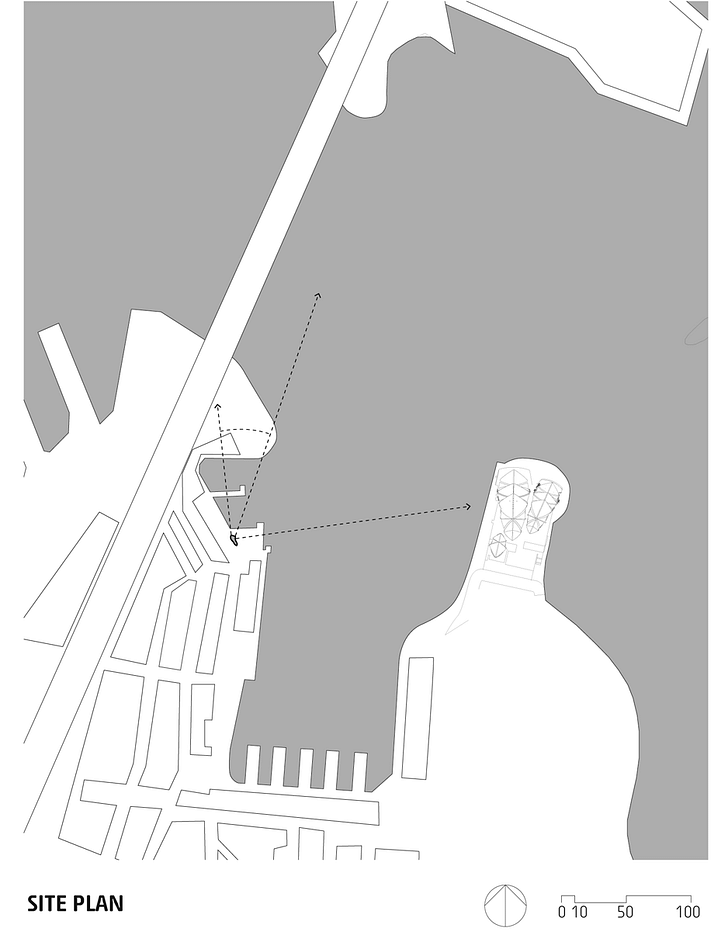
PROCESS DESCRIPTION
The algorithm designed for Cellular Tessellation hinges on four key concepts:
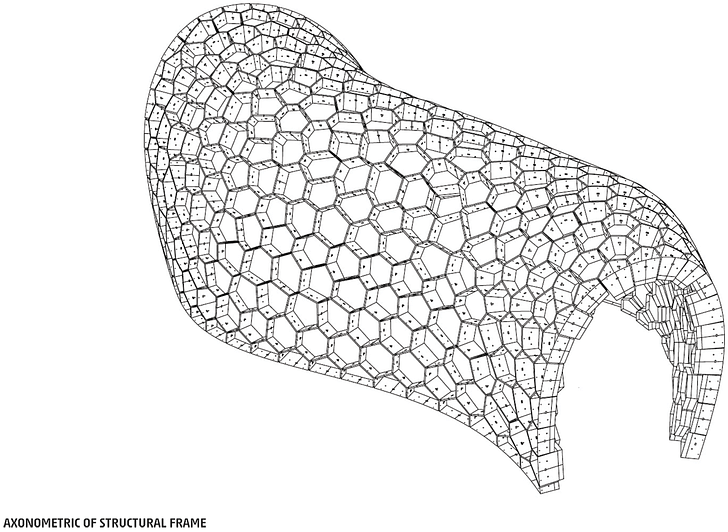
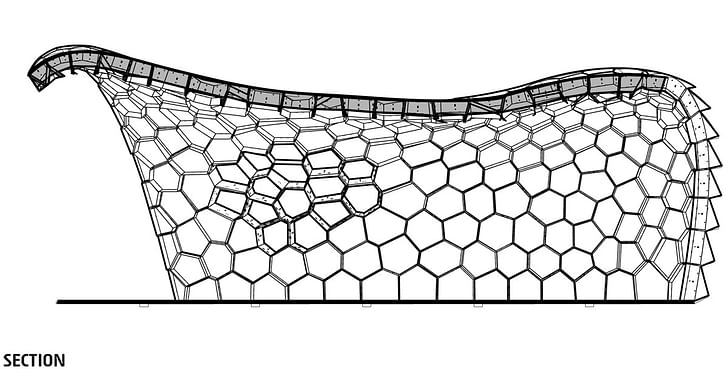
The initial steps involve a sphere-packing routine which distributes equal size spheres over the base surface as tightly as possible without overlapping. The centre of these spheres, which are now evenly spaced across the surface in both U and V directions, can be then used to generate Voronoi cells that intersect the base surface at even increments. Before the cells are generated, the points are jittered in the X, Y, and Z directions by a small amount (+/- 60mm in this case) to generate more irregular forms, otherwise they will generate nearly perfect hexagonal cells.
This method proved proved ideal as it solved some very common issues with the generation and fabrication of Voronoi cells: controlling the range of final cell sizes, the even distribution of cells over doubly-curved surfaces, and the prevention of very small segments and faces.

The next steps require a novel method of creating the aluminium composite panel structural frames and offsetting them equally in all directions. This is accomplished by isolating surface normal vectors common to two adjacent cells and projecting them onto planes generated at the cell centre. This is what allows the cell frames to negotiate doubly curved surfaces without collision, which only requires a single, uniform spacer thickness for all cell joints rather than custom spacers for all edge joins.

To manage the complexity of these operations, the algorithm has various error checking and correction methods for dealing with edge collapse, non-planar frame faces, and cell collisions, which were rare in practice but would be potentially catastrophic if not found before commencing fabrication. The use of these methods were also partially responsible for the very small (<2mm) working tolerance and resulted in a final structure that was within 0.5%
of the computed limits in all dimensions of the physical outcome.
The algorithm also provides various useful quantitative outputs such as overall structure dimensions, total area and volume calculations for the various materials, total cutting perimeters, and the total quantity of bolts, spacers, and LED lighting strips required to procure the project.

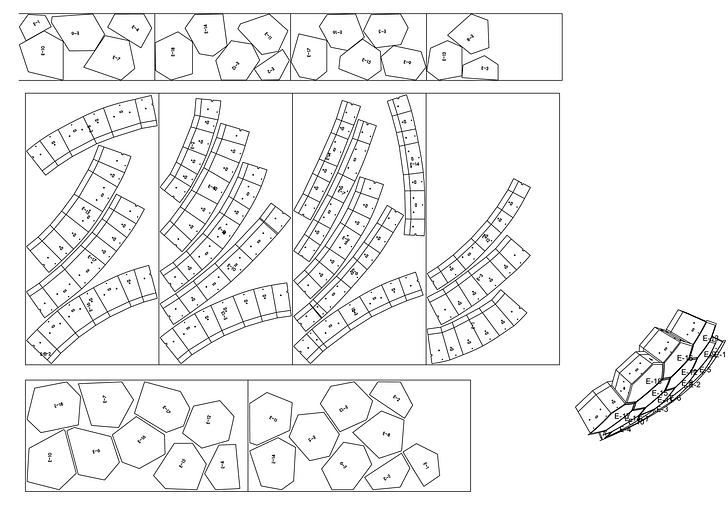
Former Managing Editor and Podcast Co-Producer for Archinect. I write, go to the movies, walk around and listen to the radio. My interests revolve around cognitive urban theory, psycholinguistics and food.Currently freelancing. Be in touch through longhyphen@gmail.com
1 Comment
big like
Block this user
Are you sure you want to block this user and hide all related comments throughout the site?
Archinect
This is your first comment on Archinect. Your comment will be visible once approved.